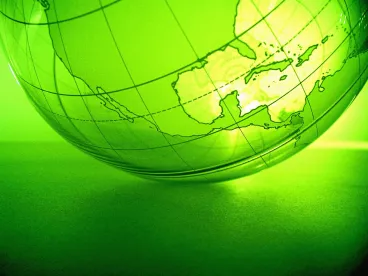What interested parties should do in light of the Supreme Court’s decision to stay the Clean Power Plan
The Clean Power Plan Rule was published by United States Environmental Protection Agency (EPA) on Oct. 23, 2015. On Feb. 9, in a terse one paragraph order, the United States Supreme Court voted 5 to 4 to stay the effectiveness of the Clean Power Plan (CPP). The order operates to stay the CPP pending a decision on the challenge to the CPP pending in the United States Court of Appeals for the D.C. Circuit and a future Supreme Court decision on whether to review the D.C. Circuit decision. As a practical matter, the Supreme Court stay order will operate to stay the effectiveness of the CPP rule until at least the later part of this year.
The surprising death of Justice Antonin Scalia also creates some very interesting legal dynamics regarding the future of the CPP. Justice Scalia voted with the 5 to 4 majority to issue the stay order. In the event the D.C. Circuit affirms the CPP and there is no replacement for Justice Scalia at the time the case reaches the United States Supreme Court (as early as late 2016), a 4 to 4 vote in the Supreme Court could result in an affirmance of the D.C. Circuit decision on the CPP.
Also, many states are taking early action on how to respond to the stay order. For example, Wisconsin’s Governor Walker issued an executive order requiring all state agencies to refrain from taking any action to plan for the CPP implementation pending the stay order.
Although the Supreme Court’s ruling by no means kills the CPP, at a minimum, it will serve to delay it and therefore multiply the uncertainties surrounding this EPA regulation. These uncertainties include the following:
-
Even if upheld eventually by the Supreme Court, the CPP will almost certainly not go into effect until after the Presidential elections. Given this delay, the outcome of these elections could have an impact on the implementation of the CPP.
-
Given the issuance of the stay, the Supreme Court obviously decided there was a likelihood that the opposers to the CPP will prevail on the challenge to rule. The death of Justice Scalia creates more uncertainties about what the future holds for a Supreme Court decision on the CPP.
-
This case has a potential significant impact on the United States commitment to the December 2015 Paris Accords. The CPP was an important element on the CO2 reduction commitment made by the United States in Paris.
The implications of the Supreme Court’s decision on the regulated utility sector must be tempered by what is happening in the electrical generation marketplace:
-
Congress’ recent extension of tax credits for solar, wind and other qualified renewable energy projects will certainly continue to drive interest in clean renewable energy projects, regardless of the ultimate decision by the Supreme Court on the CPP.
-
The unprecedented recent decline of the cost of natural gas will also be a market driver for switching away from coal to natural gas as fuel for combined cycle facilities for utilities as well as for combined heat and power projects for industry.
-
EPA had projected that coal share of America’s power mix would shrink to 27 percent in 2030 under the CPP. It is already down to 29 percent in November, based upon government data, as a result of cheap natural gas and renewables stealing market share from coal.
What should states do?
States could decide to do nothing now and reconsider the risks of a “do nothing” option at the time of the future decisions by the D.C. Circuit and Supreme Court on the CPP challenge.
Another option would be for states to conduct some contingent planning with stakeholder groups to meet the CPP timelines in the event the rule is affirmed by the federal courts. This contingent planning may be important given the tight timelines for implementation in the rule. Also, outreach to stakeholders is a requirement for states to qualify for the two year extension to 2018 to file a plan.
Those states that have substantive requirements that meet or exceed the CO2 reduction targets in the CPP will continue to plan in a manner that is consistent with the CPP requirements. Some examples of these states include Minnesota with a high renewable portfolio standard; California with its separate climate change program; New York which is overhauling its entire energy policy to more renewables; and the Regional Greenhouse Gas Initiative (RGGI) multi-state approach to control carbon dioxide emissions on the east coast.
These states may well have a competitive advantage over the “do nothing” states given the emphasis on clean technology development in these states.
These planning states should consider measuring and verifying actions taken either on a voluntary basis based upon market forces (e.g., cheap natural gas/clean renewable technology (solar, wind)) or in accordance with state substantive requirements that meet or exceed the CPP requirements. This verification action will place these planning states in a superior position in the event the CPP withstands legal challenge.
What should utilities do?
Already, approximately 405 of the 523 coal plants in the United States that were in operation five years ago are getting phased out. Utilities must still comply with mercury, sulfur dioxide and nitrogen dioxide regulations regardless of the federal courts’ decisions on the CPP.
The reduced price of natural gas and the extension of tax credits for clean renewable energy will be drivers for utilities to take actions that are consistent with the requirements of the CPP.
If utilities plan to take any actions now and in the future that are consistent with the requirements of the CPP, these utilities should monitor and verify all those actions to verify CO2 reductions associated with such actions (e.g., energy efficiency programs with their customers, supporting clean renewable energy projects, etc.)
The utilities that undertake such measurement and verifications for CO2 reductions associated with these efforts will place these advance planning utilities in a superior position in the event the CPP is affirmed by the federal courts (e.g., compliance with rate-based or mass-based requirements, establishing qualified allowances or Emission Rate Credits (ERCs) for trades, etc.)
What should utility customers do?
Utility customers should continue to advocate for engagement with the utilities and their respective states for contingent planning for the CPP implementation in the event it is affirmed by the courts (e.g., contingent planning for regional trading programs, etc.)
In addition, customers should undertake verification and measurement for CO2 reductions associated with all energy efficiency and renewable energy projects undertaken by the customers since Jan. 1, 2013. This is the retroactive date provided for in the CPP where CO2 reductions projects, such as energy efficiency and renewable energy projects, can qualify for CO2 reductions to meet the goals of the CPP.
Customers should also clearly lay out, in all of their respective contracts for energy efficiency and renewable energy projects, that the customer retains the legal rights for trading any eligible environmental credits/attributes associated with such projects. In the absence of such contract language, the customer will be unable to control a decision about who has the allowance or ERC rights in the event the CPP is affirmed by the federal courts in the future.
We live in uncertain times, and uncertain times create opportunities for some and challenges for others. The surprising decision to issue a stay by the Supreme Court and the sudden death of Justice Scalia will certainly add to the uncertainty regarding the implementation of and planning for the CPP.
Focus on Energy announces new loan fund for commercial scale renewables
Focus has announced a new pilot revolving loan program for commercial and industrial, qualified renewable energy projects. This program will provide up to 50 percent of the loan requirements for such projects at 0 percent interest in amounts varying from $50,000 to $500,000. Qualified renewable energy projects include biogas, biomass, geothermal, solar electric, solar thermal or wind. Up to $5,000,000 is available for funding this loan program during 2016 and another $2,500,000 available during 2017.




 />i
/>i


